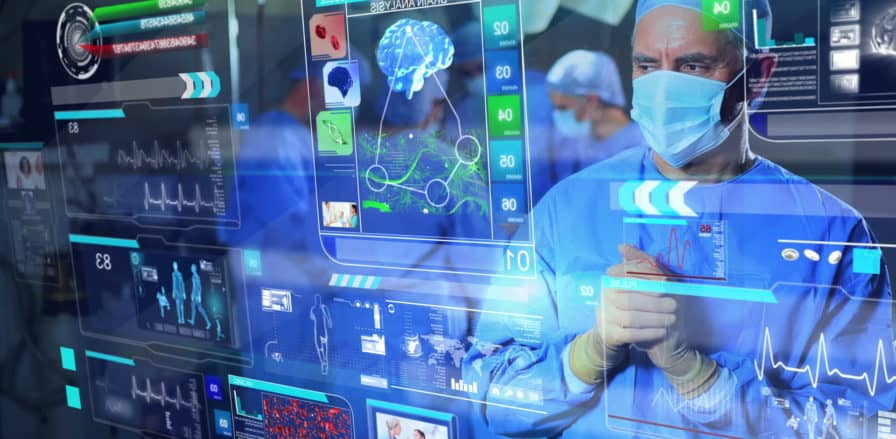By Ananth Ravi, PhD, MCCPM, MOLLI Surgical
As we inch our way up to what we hope will be full vaccination across North America, it is time for healthcare systems to begin planning for a shift in focus to post-pandemic recovery. Delayed treatments and postponed procedures in areas such as breast cancer care have resulted in a significant backlog that must be urgently addressed.
Between March and mid-July 2020, approximately four-in-10 Americans missed medical care appointments, including mammograms, which resulted in an alarming 90 percent fewer screenings in April 2020 compared to the previous year. In Canada, 97 percent of women missed their mammograms in the first few months of the pandemic, leading Dr. Jonathan Irish, the provincial head of surgical oncology at Cancer Care Ontario and Ontario Health, to predict an oncoming “tsunami” of patients presenting with more advanced stages of breast cancer.
One key area to consider may be capacity-building through the use of new and innovative technology. Traditional wire-guided breast cancer localization techniques involve a protruding wire being implanted to mark the location of the lesion before removal through surgery. Both procedures must be performed on the same day due to the limitations of the wire, leading to discomfort and inconvenience for the patient, as well as a severely limited scheduling window for the radiologist, the pathologist and the surgical team. The two procedures become inextricably linked due to availability – any delay by one party may result in postponement and a wasted opportunity to treat other patients.
Wire-free techniques allow the decoupling of localization from surgery. Patients undergo a brief five-minute procedure to implant a miniature marker and then go home, before returning at a later date for surgery. Radioactive seed localization allows for a window of five days between the two procedures, while the use of a magnetic seed allows for 30 or more days before removal. One study suggested that this improved workflow results in a 34 percent increase in the use of time slots dedicated for biopsies and an average decrease of 4.1 days for patients waiting for surgery. In addition to increased efficiency, a transition to wire-free technology has also been demonstrated to result in significant cost savings – from $1,130.41 to $250.90 per patient. As well, radioactive seeds bring additional encumbrances associated with radiation management and institutional risk, both of which need to be weighed as part of the decision to use them.
Importantly, decoupling the two procedures also allows hospitals to examine the operational efficiency of each program independent of the other. Instead of early morning localization on the day of surgery, a dedicated clinic can be organized several days in advance to accommodate multiple patients. The clinic can be run by a single radiologist and technologist. Solely performing localization also eliminates the need to set up a variety of equipment needed for several different procedures. Removing the need to pair localization with surgery allows for greater flexibility in scheduling for the hospital – and specifically the radiology department. Rather than being earmarked for localization, the radiology suite time slot can instead be used for biopsies or other procedures – allowing surgeons to tackle the breast cancer backlog.
The benefits of scheduling flexibility extend beyond the procedural room to the entire medical team. By implanting wire-free markers at a localization clinic, radiologists and technologists can be reallocated to perform other procedures and see other patients. Their efforts can be shifted to various longer waitlist activities to help address the backlog of other procedures, or higher revenue-generating procedures if necessary. Increasing capacity and lowering waitlists ultimately results in better health care for more patients by creating greater access to timely care.
While a transition to wire-free techniques can represent an important step in building capacity, the technology must also be understood and applied within the context of the institution. With the right approach, facilities in rural communities and large hospitals in the city will be able to employ the same technology in different ways to increase operational efficiency. Consultation and dedicated efforts must be made by the surgical team to examine an institution’s workflow to understand where efficiencies can be gained. Conversely, forcing new technology into an environment ill-equipped to manage it may result in fewer gains in efficiency, health care provider burnout or a lack of adoption. Properly implementing a new system requires effective change management, communication, time, resources and people. It’s not easy to do, but industry can help make the lift lighter by supporting care teams through the change.
Addressing the backlog of treatment created by the pandemic presents a unique challenge and, with it, an opportunity for healthcare administrators. Reducing the backlog little-by-little while treating new patients will continue to delay detection of advanced stages of breast cancer and other diseases, putting patients at risk. Instead of treading over familiar grounds, hospitals must seek out new technologies and methods in an attempt to increase efficiency and capacity. Rather than returning to where they were, hospitals must move forward towards better and more effective patient care.
The Editorial Team at Healthcare Business Today is made up of skilled healthcare writers and experts, led by our managing editor, Daniel Casciato, who has over 25 years of experience in healthcare writing. Since 1998, we have produced compelling and informative content for numerous publications, establishing ourselves as a trusted resource for health and wellness information. We offer readers access to fresh health, medicine, science, and technology developments and the latest in patient news, emphasizing how these developments affect our lives.








